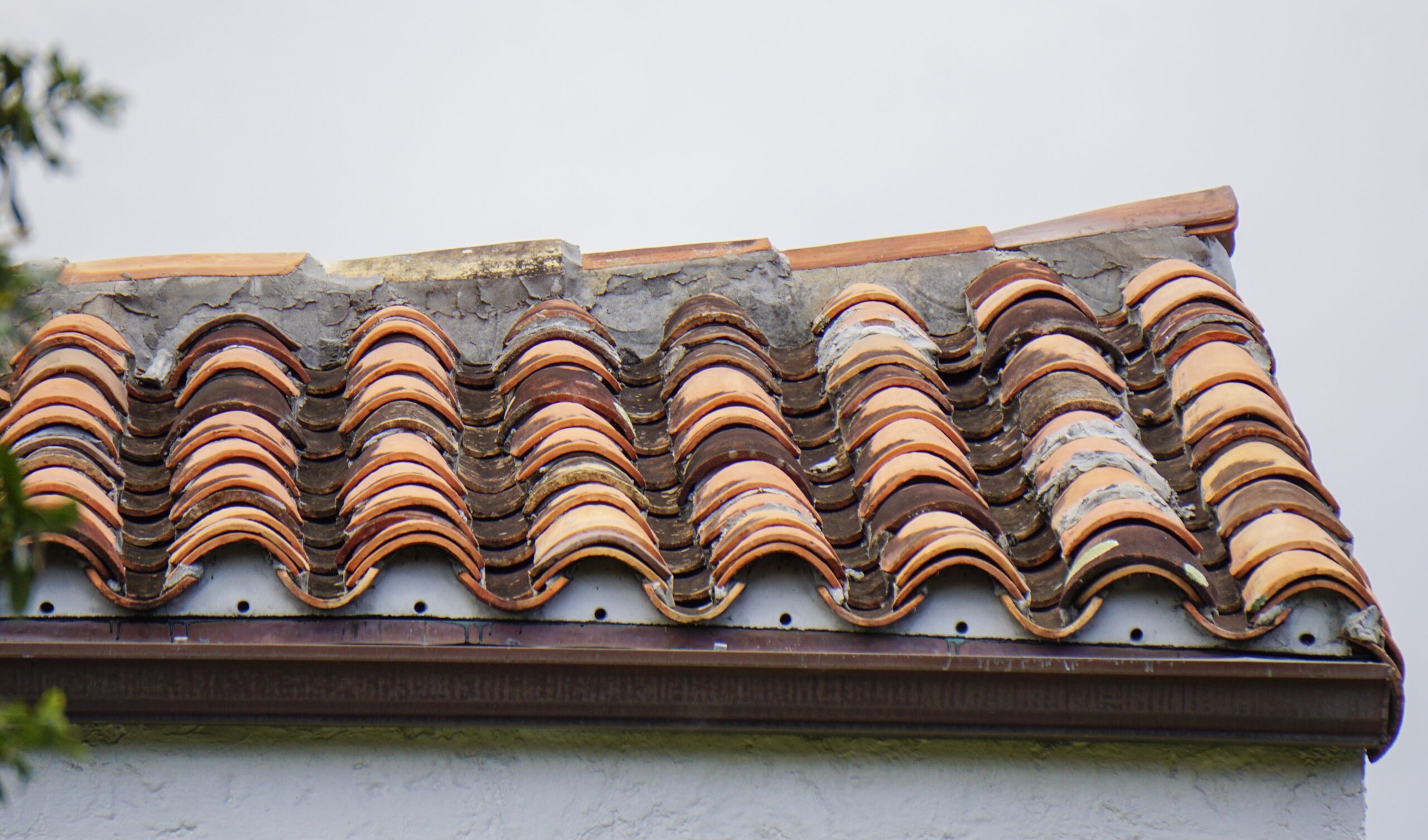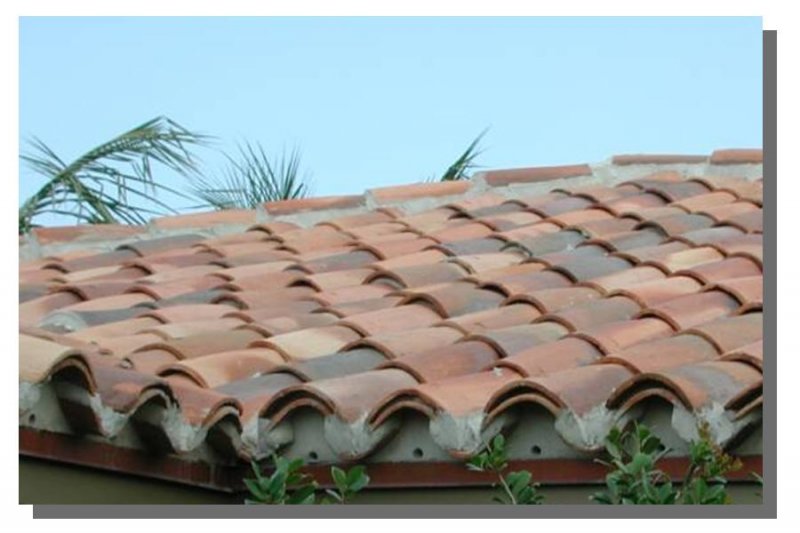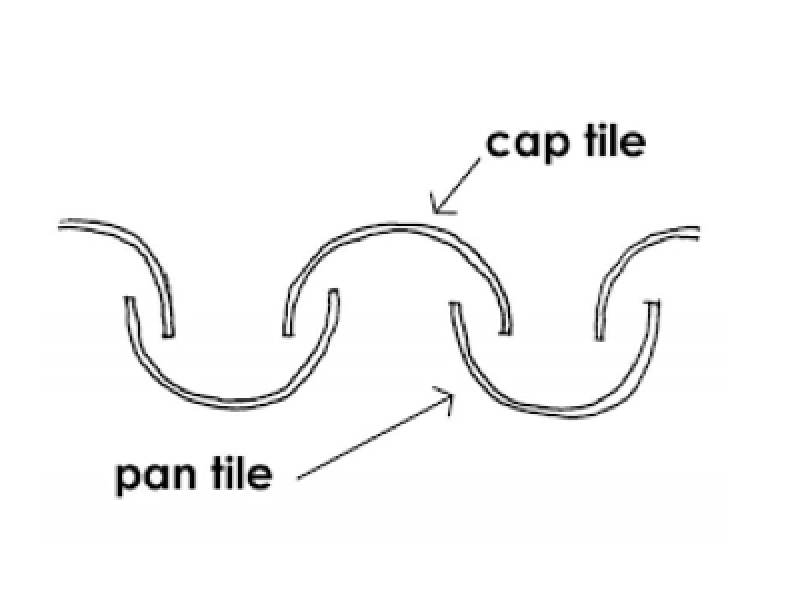
Historic Cuban Barrel Tile
A lot of you will be reading this thinking its a bit boring (at least Rick thinks so), but I wanted to address this because a lot of our Miami Beach Real Estate customers are constantly asking us about certain elements of historic homes – so here it is …proceed with CAUTION.
Historic Cuban Barrel Tile
Historic Cuban Barrel Tile is one of the key elements found in Mediterranean Revival Architecture. Key, because it is one of the most visible elements and because without it, a historic house can seem stripped from its roots.

It is the one single element that has a history of its own. It is a handmade or hand processed barrel natural clay tile, either made in Cuba prior to the imposition of the U.S. Embargo, or manufactured in 18th Century Spain, salvaged from buildings in Cuba and imported to the United States during the 1920s and 30s. (hence the name ‘Historic Cuban Tile’).
When buying Miami Beach historic real estate it is important to identify the original elements of a structure in order to know how well preserved the property has been through the years. Most buyers of historic properties will look for properties that have maintained its historic integrity or properties that have the potential to be restored.
Historic Cuban tile is one of those elements that are cherished by the ‘historic community’, but don’t be surprised if finding a home with Cuban tile may mean that the roof is not water tight and a new roof may be necessary. There are several steps that must be taken to replace a roof with Historic Cuban Tile.
- Identify that a property does in fact have Historic Cuban Barrel Tile. A lot of these tiles have an embossed identification mark usually located on the convex side at the wide taper end of the tile.
- Once tile is identified as historic and property needs to be re-roofed, all means should be taken to salvage the tile.
- Historic Cuban tile can then be mixed with modern hand-made tile, where the historic tile is used in caps, rather than pans to take full advantage of the visible portion of the new roof.

Please note that if Historic Cuban Tile was not found on the property, there are many ways of building a historically appropriate roof.
Historic Cuban Tile can be purchased, or when that is not financially possible, there are manufacturers of hand-made barrel tile that can be used to achieve the original look of the roof. There are also roofers that specialize in historic roofs, not only in salvaging original historic barrel tile, but doing installations that are historically appropriate like reapplying the tile correctly, and using double caps and/or pans on the edge of the roof line.
The overall look of a roof with Historic Cuban Tile is that of an ‘aged’ or ‘informal’ nature. These tiles, because of their porous clay material will accumulate mold and pressure cleaning is not recommended.
There was a problem recently a few years ago in Miami Shores with Code Enforcement requiring historic homes to pressure clean their roofs and every time I think of it I shake my head in disbelief. In order to be able to appreciate our historic homes and architecture, it is important to educate ourselves on the materials, the process of construction as well as the history behind these.
The response I have gotten from this article has been amazing. I am happy to see people interested in historic materials and more so, being interested in restoring the historic relevance of their homes.
**original article written on December 21, 2009**
15 thoughts on “Historic Cuban Barrel Tile”
Comments are closed.

Hello Ines,
How are you doing? You are probably the first person I ever “spammed” if thats what you call it…. anyways I hope you accept my apology.
Since 2006 we have been working on a new sustainable hybrid barrel tile system to increase energy efficiency and hurricane wind resistance. We have Dade County Approval since Oct 2008. The new system is half the weight and maintains the original character of the authentic traditional handmade look utilizing less units per square than a common “S” roof tile installation. Please keep in mind we are using 100% real handmade barrel tile covers.
The new hybrid system is designed for new construction and re-roofing. We are trying to get Miami Dade County Approval to get this system as an approved retro-fit over existing asphalt shingles for individuals looking to harden existing shingle roofs against hurricane force winds, create a more energy efficient home and increase curb appeal for less than what it would cost to re-roof with another boring shingle roof.
Other options include aesthetic photovoltaic integration and the support of ornamental horticulture “green roofing”. So the rumors are true! We want to introduce the use of drought resistant flowering sedums and succulents in between the tile rows over a light weight fire resistant growth medium. There myriad benefits by green roofs.
Danny Arguelles 305-710-6659
Danny – apology accepted, but as I said, I mentioned your product in the original post, so you are allowed to leave contact info (at least here). I was talking about you with a client that used your product in a new Miami Beach home and I recognized your tile from the photos….not bad work! 🙂
Thanks for the green info and good luck with that approval – keep me informed and may do a post about it here in Miamism.
Ines,
We are pleased to inform, that Artezanos Inc. was successful in winning the appeal of Miami Dade County Product Control’s findings that Chapter 15 section 1521.19 of the Florida Building Code, prohibiting the use of tile systems or tile components over existing roof systems in the High Velocity Hurricane Zone.
As it stands now we have been granted “Hybrid” status by the Miami Dade County board of Rules And Appeals by Chapter 15 section 1518.9.3 providing that “Metal shingles may be applied as a recover over a single layer of asphaltic shingles or smooth surface roofing” and Chapter 1512.2.2 providing that “Innovative products and/or systems outside those currently recognized under this chapter may have a Product Control Approval based on Performance Testing”.
Our system is already approved for new construction and re-roofing and now we have a “Green Light” on making sustainable upgrades to existing unsustainable asphalt shingle roofs. This victory is unprecedented in the Florida Roofing Industry and represents a wide market in the State of Florida. The savings in shingle demolition expense translates to a budget that could otherwise be used for solar integration. Our patented Universal Metal Pan System brings this all to fruition in Miami Dade County otherwise considered the most stringent of Building Codes in the world.
Pending performance testing, the New Hybrid System is now even closer than ever for affordable aesthetic solar integration for Miami Dade County Residents.
CONGRATULATIONS Danny!
What great news and thanks for giving me the information – will certainly keep it in mind. Glad to hear that Dade County is moving in the right direction with regards to green systems.
Would someone please talk to the City of Hollywood (Florida) about proper historic preservation as it relates to (not) pressure cleaning roofs? They are insane about this, albiet selectively, but once they cite you for having anything but a roof you could eat of off, they hound you forever and the fines can run into the tens of thousands. The city hasn’t a single CLUE about historic preservation and is sytematically intimidating/forcing people to do things that actually DAMAGE their historicially important roofs, stucco, etc. I really regret buying in this municipality. If you care about historic preservation, do not come to Hollywood, Florida.
Susan
Unfortunately, what you describe happens in a lot of places, even those cities that are “historically considerate”. Miami Shores went through a period of siting homes with dirty Cuban Tile Roofs and it took a good scare from an attorney for the city to get education about the damage of pressure cleaning historic tile.
It only takes involvement from the community to make changes – it may be something to present to the South Florida Historic Society to see if they can help.
Instead of giving up, I hope you find the right individuals to present to your local boards and change your zoning codes and educate them about historic materials.
Hello,
I have an 80-year old barrel tile roof made of Ludowici tiles. I chase a couple of small leaks a year and I want to remove/salvage the existing tiles, replace the underlayment, and re-use my original tiles. Roofing companies keep telling me that there is no way to salvage the old tile because a) they will have to be knocked off and b) they will still have clumps of mortar stuck to them.
I cannot give up on salvaging this really expensive, historic tile. Does anyone have any suggestions on technique? Or suggestions on someone who can get the job down without telling me in the first five minutes that it is an impossible task?
BTW, I have a one-story house with a low-pitched roof, with lots of flat roof surrounding the pitched areas.
Thanks for your thoughts and recommendations.
Hi Sue,
The salvaging of your roof tile has to do with the roofer you use. The common roofer will not want to take the time to remove historic tile carefully. You need to do some research about roofers that specialize in historic roofs and take into consideration that they will also be more expensive. If you are in Miami, take a look at Danny Arguelles’ company above or maybe he can recommend someone.
Sue,
Ludowici tiles are much easier to save because they are high fired clay much denser than the cement used to bond them. Salvaging should always be your first option if you have good roof tile. Sadly, most roofers see more VALUE in replacing your roof with a new one and discarding your old roof tile.
Dan
Inez, another great article … and interesting comments too – especially liked the one about the preservation board chairman getting the order to pressure clean his hand made tile – indeed, that sounds familiar – I think I may know him. Thanks for giving Historic Cuban Tile good exposure. Warren
Hi Warren!
Glad to see you found my articles – I have to say that serving with you on the Miami Shores Historic Preservation Board for so many years was not only fun, but educational and rewarding when it came to saving historic properties and educating the consumer. And Yes….I think you may know that guy as well!! 😉
I am an Interior Designer in Ft. Lauderdale. I was recently hired by a client who purchased an old Francis Abreau home. I want to replace the “fake new” barrel tile with an old Cuban tile or a new that looks like old. Loved your article!! Any suggestions of who supplies such a tile?
Hi Tracy,
Glad you found it useful. Please read comments above, they may be able to help you.
Tracy,
I have a 1930 Spanish in Hollywood with original barrel tiles. Hurricane Wilma relocated some of the tiles to my bedroom floor and I was able to see the manufacturer’s stamp on the underside. My tapered barrel tiles were made by Ludowici. They have a good website.
Thanks so much Susan!!